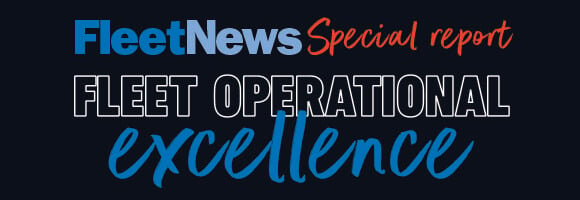This feature was taken from our special Fleet Operational Excellence report

The choice between offering a company car or cash allowance has long been a dilemma for those in fleet, with changing factors meaning it is important to weigh up the pros and cons of each method regularly.
Here, Harvey Perkins, director at leading company car tax consultancy HRUX, examines the issues.
It’s maybe a little sad to say, but probably true ... I’ve spent a large chunk of the past 25 years advising companies on cash alternatives to company cars.
I think it’s also true to say that throughout that quarter of a century I’ve noticed a tension between human resources (HR) and the fleet team about the benefits of one over the other.
Here, I’ll explain some of the key issues, as I see them, in more detail. But I'd like to start by making a general observation – in my experience HR departments often seem to prefer to offer cash ahead of company cars.
This is perhaps not surprising, given cash is relatively straightforward to provide, and, of course, easy to benchmark against what other companies are offering.
Cars tend to be complicated and difficult to benchmark. Yes, you may get a Volkswagen ID.5 and I only get an ID.3, but you might have to keep yours for four years and have very limited choice over considerations such as trade up, while I get a new one every three years and have greater flexibility.
Very hard to compare for either the employee or the employer.
I had a boss a while ago who said there were two things companies can’t seem to get credit for doing right – staff canteens and company cars.
If we accept that HR tends to lean towards the provision of cash rather than a car, it follows that, as scale charges have shot up for traditional petrol and diesel cars in the past 10-plus years, many businesses have turned their backs on company cars.
Analysis of HMRC benefit-in-kind (BIK) statistics suggest total cars reported on P11Ds fell from more than one million to around 720,000 by April 2022 but has since risen to 760,000 in 2023. Figures are provided by HMRC with some caveats, mostly that it may not include cars that were “payrolled” rather than appearing on P11D forms.
It’s interesting to add that, probably because of very low scale charge rates for electric and plug-in hybrid cars along with the inexorable rise in salary sacrifice schemes, use of company cars is once again trending upwards.
Cash allowance levels
When a company asks what they should set their cash amounts at, we often start by asking them what their recruiting teams are telling them.
If the company next door on your industrial estate is luring your staff with higher cash offers, then that’s your target right there.
The second general observation I’d make about cash is that often an employer will not have looked at the rates for many years.
Contrast this to the company car policy which is often subject to constant pressure to drive down costs or provide better value for money.
It follows that the cost benefit of paying cash is often at considerable variance to the cost of the company car option.
If you approach the cash amount’s relationship to company car policy, if you still have one, mathematically then there’s another question: are you equalising the cost of cash to the employer’s cost of providing a car or to the amount the employee needs to privately lease and operate the same car?
I use “lease” given that adding the cashflow implications of an employee buying (say) a used car outright compared with their monthly cash allowance can go beyond what one might consider a reasonable comparison.
The company car tax charge is a huge issue. Let’s say you have two cars, both with a P11D value (list price) of £50,000 but one’s electric (2% scale charge, until April 2025 when it’s 3%) and the other’s a diesel (say 35%).
What’s the cash needed to leave the employee no better nor worse off? With the EV you’ve saved £400 this year in tax (assuming 40%) but the diesel saves £7,000.
Therefore, the employee with the diesel needs a lot less cash to be better off.
Then there’s approved mileage allowance payments (AMAPs). These are for people who use their own cars for business purposes and the rates remain generous even though they’ve not been reviewed for donkey’s years, at 45p (25p after 10,000 business miles for tax purposes).
Five hundred business miles a month on average? The employee can get £225 tax and national insurance contributions (NICs) free towards their motoring expenses.
If you don’t pay the AMAP the employee can still get their tax and NICs back, and you can get employer’s NIC back, following recent tax cases.
On the national insurance front, if you are not paying the cash allowance proportion relating to business miles net of NIC, then you are potentially making an illegal deduction from the employee.
Problem highlighted
That highlights another problem with cash versus cars: with a company car the employer often absorbs the cost regardless of mileage.
If you take cash and provide your own car then the implication of higher mileage, particularly private, is that your cash won’t go as far.
The AMAP offsets some of this for business mileage, but those with higher commutes can often find the cash less attractive.
To all of this we add the real-world concerns of paying cash to drivers to provide their own cars, where there are significant risks to the employer if the car isn’t fit for purpose, well maintained and properly insured (the so-called ‘grey fleet’ risk).
Salary sacrifice is often seen as the other side of the coin to paying cash as, although it’s a company car that the employee gets, the amount the employee elects to give up will be very similar in composition to the amount of cash you’d pay them if you were equalising the employer’s cost.
In other words, the employer often wants to pay nothing towards the cost of the sacrifice car, so we work out the wholelife costs of the company car, including insurance against things that might happen, and the amount we arrive at is the amount the employee agrees to waive their contractual rights to salary for.
Again, there are complications, like will the employer keep their 13.8% NIC saving or pass some or all of it back to sweeten the deal?
If this all sound a little complicated, then maybe that explains why I’ve spent so much time on it over the years.
And it’s cyclical – high tax charges on company cars drive people to review cash; low charges on cars drive people to look at salary sacrifice and company cars.
With a new Government, I’ve no doubt the cycles will start again soon enough.
Boost efficiency, cut costs and improve compliance across all areas of your business with the Fleet News Operational Excellence report.
Delve into crucial topics for effective fleet management, including electrification, digitalisation, alternative funding, and compliance. To give you an edge, we've gathered insights from top industry experts who reveal their best practices and innovative strategies.
Dive into these highlights and read the full report to unlock the secrets of running a more efficient and effective fleet operation.





















Login to comment
Comments
No comments have been made yet.